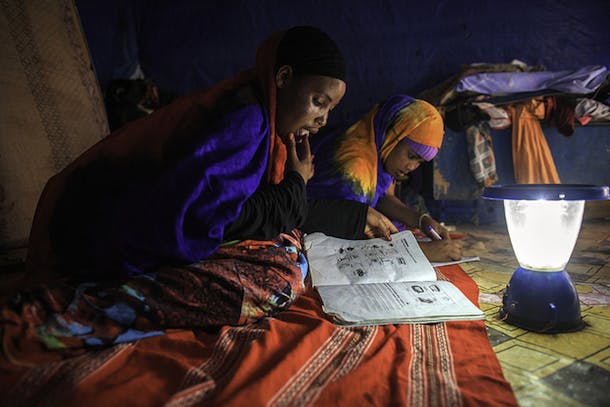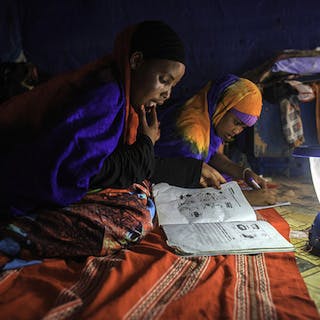 (Photo credit: Jiro Ose/UN Foundation)
(Photo credit: Jiro Ose/UN Foundation)
Tens of millions of people around the world have been forced to flee their homes because of conflict, disaster, and other humanitarian emergencies.
Food, shelter, water, and medicine are all essential to their lives: So is energy. Quality energy solutions are required for lighting, heating, and safety, particularly for girls and women. Yet often in refugee camps or other emergency settings, reliable, safe, and quality energy is unavailable. Kerosene lamps, firewood, and candles pose fire hazards in camps, tents and other rudimentary shelters for displaced people.
Solar lighting, including solar lanterns and street lights, are safe and clean solutions to help improve the lives of refugees and displaced people. The United Nations, with the global responsibility for responding to humanitarian crises, has made expanding sustainable energy solutions a priority. Here are five reasons why:
1. Solar lighting reduces the risk of fires.
In emergency relief settings, women often use firewood for light in their make-shift shelters. Tents or shelters that are often close together can easily catch fire and the flames can get out of hand. Solar lights can provide a life-saving alternative.
2. Girls and women can be safer.
Without electricity, refugee camps are dark at night, and girls and women are vulnerable to sexual assault when they have to walk in the dark to use a latrine, for example. Adequate lighting, particularly solar powered street lights, can make life in refugee camps safer for girls and women.
3. Children can study at night.
In many refugee settings, people remain in shelters for long periods. Without access to electricity, children in refugee camps lose the ability to study in the evenings. With solar lights, children can continue to learn without the health and safety risks from lighting provided by smoky firewood or kerosene lamps.
4. Solar lighting offers a healthier solution.
In many refugee settings, toxic and unsafe kerosene lanterns are commonly used. Children may be especially at risk – mistakenly consuming the kerosene, suffering burns or respiratory problems from the toxic smoke.
5. Solar lights are a more environment friendly alternative.
Collecting firewood for lighting not only puts women in refugee camps at risk of violence, it also contributes to deforestation. Solar lanterns offer a cleaner and greener alternative for lighting even as it cuts down the time taken foraging for firewood.
Under the UN’s Sustainable Energy For All initiative and through cross-cutting partnerships such as the UN High Commissioner for Refugees (UNHCR) led initiative, “Safe Access to Fuels and Energy,” the UN Foundation’s Energy Access Practitioner Network support the UN’s efforts to provide the world’s displaced populations with access to clean energy solutions.
TAKE ACTION: You can take action today by helping raise awareness of this important issue.

